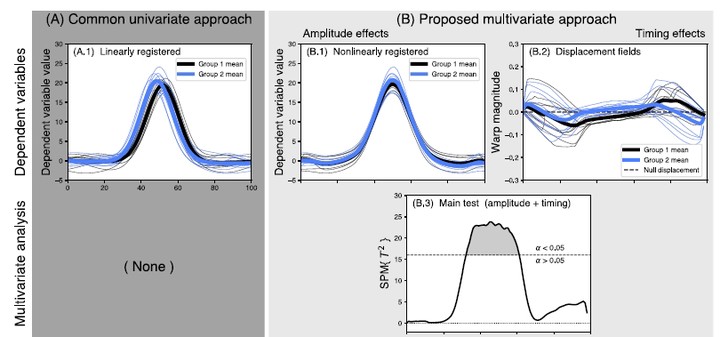Simultaneously assessing amplitude and temporal effects in biomechanical trajectories using nonlinear registration and statistical nonparametric mapping

Abstract
Biomechanical trajectories generally embody amplitude and temporal effects, but these effects are often analyzed separately. Here we demonstrate how amplitude–phase separation techniques from the statistics literature can be used to simultaneously analyze both. The approach hinges on nonlinear registration, which temporally warps trajectories to minimize timing effects, and the resulting optimal time warps can be combined with the resulting amplitudes in a simultaneous test. We first analyzed two simulated datasets with controlled amplitude and temporal effects to demonstrate how amplitude–timing separation can avoid incorrect conclusions from common amplitude-only hypothesis testing. We then analyzed two experimental datasets, demonstrating how amplitude–phase separation can yield unique perspectives on the relative contributions of amplitude and timing effects embodied in biomechanical trajectories. Last, we show that the proposed approach can be sensitive to procedural and parameter specifics, so we recommend that these sensitivities should be explored and reported.